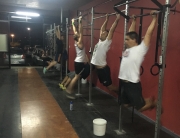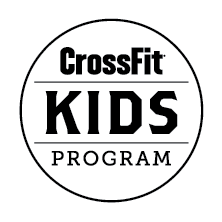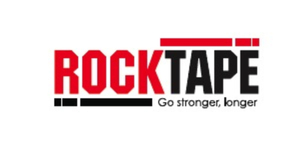- BLOG ENTRY 2 Jan 2014
- Take a moment to think about the following: If you could wave a “magic wand”, what would you do to improve yourself as a human being?
- Obviously achieving these goals requires a lot more conscious effort, dedication and perseverance than merely waving a “magic wand”!
- Now how would you go about achieving this? Is the fun in the achievement of these goals, or rather in the journey that leads you to achieving, or moving closer towards achieving, these goals? Or both?…
- Goal Setting & Positive Self-Talk
- Firstly I would like to acknowledge that the majority of the information below has been taken from an article written by Greg Amundson titled: “Coaching the Mental Side of CrossFit”. This article was published in the CrossFit Journal, in July of 2010. Greg Amundson is referred to as the original CrossFit Firebreather. For many years he was the CrossFit standard bearer and set many of the early WOD records. He was trained by CrossFit Founder “Coach” Greg Glassman and took ownership of the original CF headquarters gym in Santa Cruz, California, directly from Coach. He was one of the first Certification coaches and is rightly considered a legend in the CrossFit world. Greg is renowned for his indomitable will as well as his deep and creative knowledge of training and CrossFit. He presents seminars/workshops on the mental side of CrossFit and is seen as a pioneer on the mental side of CrossFit training.
- At Greg’s Level 1 Certification, Coach Greg Glassman pulled him aside and said, “Greg, the greatest adaptation to CrossFit takes place between the ears.”
- Greg starts off the article with the following…”Through observation, practice and research, I discovered something remarkable: the world’s best CrossFit athletes had learned to control and optimize their self-talk. This potent mental skill resulted in their ability to formulate and achieve their goals – both inside the gym and out – with consistency and grace. The natural extensions of their positive self-talk were an optimistic energy, a mental toughness and an indomitable spirit evident in their physical accomplishments in the CrossFit workouts. I concluded that Coach Glassman was indeed correct: the mental adaptation to CrossFit was of critical importance to CrossFit athletes and coaches hoping to forge elite fitness.” (Amundson, July 2010)
- Above I asked, “If you could wave a “magic wand”, what would you do to improve yourself as a human being?”
- I also asked: “Now how would you go about achieving this? Is the fun in the achievement of these goals, or rather in the journey that leads you to achieving, or moving closer towards achieving, these goals? Or both?…”
- The most productive way in improving ones-self as a human being is by Setting Goals.
- In his article, Greg Amundson created a new definition of the word “goal” to better serve the purposes of his article.
- Goal (noun) 1. A specifically desired end state, expressed in the positive tense, which provides
- motivation and direction on the path to achievement (Amundson, July 2010).
- In addition to defining this term, he elaborated on three points of performance in goal setting that would ensure the success of the CrossFit coach and athlete.
- These 3 performance points in Goal setting were:
- 1. The goal must be concise and specific. “I want to complete 50 fluid gymnastic kipping pull-ups in a single set.”
- 2. The goal must be expressed in the positive tense. “I want to safely perform a backwards roll to support on the rings.” vs. “I don’t want to fall off the rings while upside down.”
- 3. The goal must include a time frame that is challenging yet realistic and achievable (Amundson, July 2010).
- He elaborated further…
- 1. Concise and Specific Goals
- Before one can move forward on the path to achievement, the athlete (together with the coach – in the CrossFit environment) must understand and agree on the desired end state. The more focused the definition, the more opportunity there is for precise planning, preparation and training. In addition, by specifically defining a goal, the CrossFit coach and the athlete can evaluate with precision when the goal has been met (Adapted from Amundson, July 2010).
- 2. Positive Tense
- In order to maximize human athletic potential and harmonize the mind-body connection, coaches must teach their athletes the significance and power of positive expression. The conscious and subconscious brain will either promote or inhibit athletic performance. If I tell myself consciously, “I don’t want to fall off the climbing rope,” my subconscious brain in fact hears, “I want to fall off the climbing rope.” This is because the subconscious does not hear the negative tense. By telling yourself what you don’t want to manifest, you actually create a blueprint for exactly
- what you intend to avoid. The key lesson for the athlete (and the coach) is to strive for keeping in a constant state of positive affirmation of the goal’s desired end state (Amundson, July 2010).
- 3. Realistic and Challenging Time Frame
- The final point is perhaps the most important but least understood: a goal must contain a time frame that is realistic and achievable while at the same time providing the athlete with a certain amount of challenge and motivation. A goal set too far in the future will lack the
- urgency and fail to create the internal fire needed for accomplishment. On the other hand, too short a time frame may lead to discouragement and despair (Amundson, July 2010).
- When deciding upon the time frame for a goal, a certain degree of self-assessment on the part of the athlete (and by the coach) must take place. For example, if an athlete tells me his goal is to perform a single set of 50 pull-ups in three months, I will likely ask him how many consecutive pull-ups he can currently complete. How specifically the athlete can answer that question will help me in determining the best approach to supporting the achievement of the goal. If the athlete responds, “I’m not sure how many pull-ups I can do right now,” we need to find out immediately!
- The approach to setting a time frame for completing 50 consecutive pull-ups will vary greatly if the athlete has five pull-ups as compared to 45 pull-ups. In setting the time frame for a goal, one must weigh the delicate balance between motivating and challenging an athlete while at the same time ensuring a high likelihood of success. This is where your CrossFit coach has the responsibility of helping athletes set and achieve their
- goals. The key word being “achieve”. By defining, moving towards and ultimately arrive at a desired end state, we set in motion a pattern of behavior that can be applied to anything (i.e. any goal you would like to achieve). The frequency with which an athlete can set a goal for him- or herself and reach the desired end state will in large partly define the individual’s sense of ability and capacity.(Adapted from Amundson, July 2010)
- When the lesson of goal setting is implemented, an exciting and rewarding journey suddenly awaits the five-pull-up athlete whose goal is to achieve 50 pull-ups: he or she has an opportunity to set and reach several smaller and more immediate goals along the way! These mini-triumphs will reaffirm to the athletes their ability to succeed and provide them with motivation and confidence. Remember, well before athletes can reach 50 pull-ups, they must first reach 10, then 15 and then 20 pull-ups. Each of these seemingly small increments can in fact become a huge milestone and a chance for both the coach and athlete to say, “I can achieve that which I set my mind to.” (Adapted from Amundson, July 2010)
- The above paragraph points towards the answering my question I posed earlier: Is the fun in the achievement of these goals, or rather in the journey that leads you to achieving, or moving closer towards achieving, these goals? Or both?…”
- I believe both! The achievement of these smaller goals not only serves as stepping stones towards the achievement of the larger goal, but also provides the journey that we experience, envigorating our lives with fun and a sense of achievement.
- Going hand in hand with goal setting is the Power of Positive Self-talk which Greg Amundson elaborates on further…
- The Power of Positive Self-Talk
- If there is one consistent character trait I have observed in CrossFit athletes from around the world, it is a strong sense of optimism. The difficulty of the CrossFit workout naturally instills not only physical fitness but also mental fitness. Regardless of the time to completion or the amount of weight used, simply facing the daunting workout of the day (WOD) puts the other obstacles of life into proper perspective: they are all a lot easier. CrossFit coaches and athletes who understand that optimism and a positive mental attitude can yield tremendous results in the gym have one thing in common: success. The athletes are performing at the top of their game, and the coaches are surrounded by thriving clients (Amundson, July 2010).
- The difficulty of the CrossFit workout naturally instills not only physical fitness but also mental fitness (Amundson, July 2010).
- In his experience as both a CrossFit athlete and coach, Greg Amundson (July, 2010) concluded that a positive mental attitude and positive self-talk are paramount in achieving the full potential of human work capacity.
- An indomitable spirit will be forged by both the coach and athlete as they realize what the mind can believe the body can achieve (Amundson, July 2010).
- Your Goals for 2014
- What are your goals for 2014? How would you want to improve yourself as a human being?
- More specifically for our context – What are your CrossFit / Physical Conditioning Goals for 2014? Please think of a few key goals you would like to achieve – we will elaborate on these in class!
- Remember that some goals that you may set may not be achieved this year I.e. I recently watched a clip from the CrossFit Journal on Greg Amundson still achieving personal records (PR’s) after 10 years of CrossFit training! We will work on achieving the smaller goals that will serve as stepping stones to the end goal.
- Ending off, I would just like to point out that this article is from the “in-valuable” CrossFit Journal resource. I would just like to encourage you all to subscribe to the CrossFit journal on the CrossFit HQ site – the cost is $25 per annum – there is a wealth of information (from written works, to audio and visual clips) and this is truly exceptional value for money! You can click on the CrossFit journal link on any given page on our website to subscribe!
- The owners & coaches wish you all the success in achieving your 2014 goals. If any of you need any assistance with these outside of class time, please feel free to contact us.













